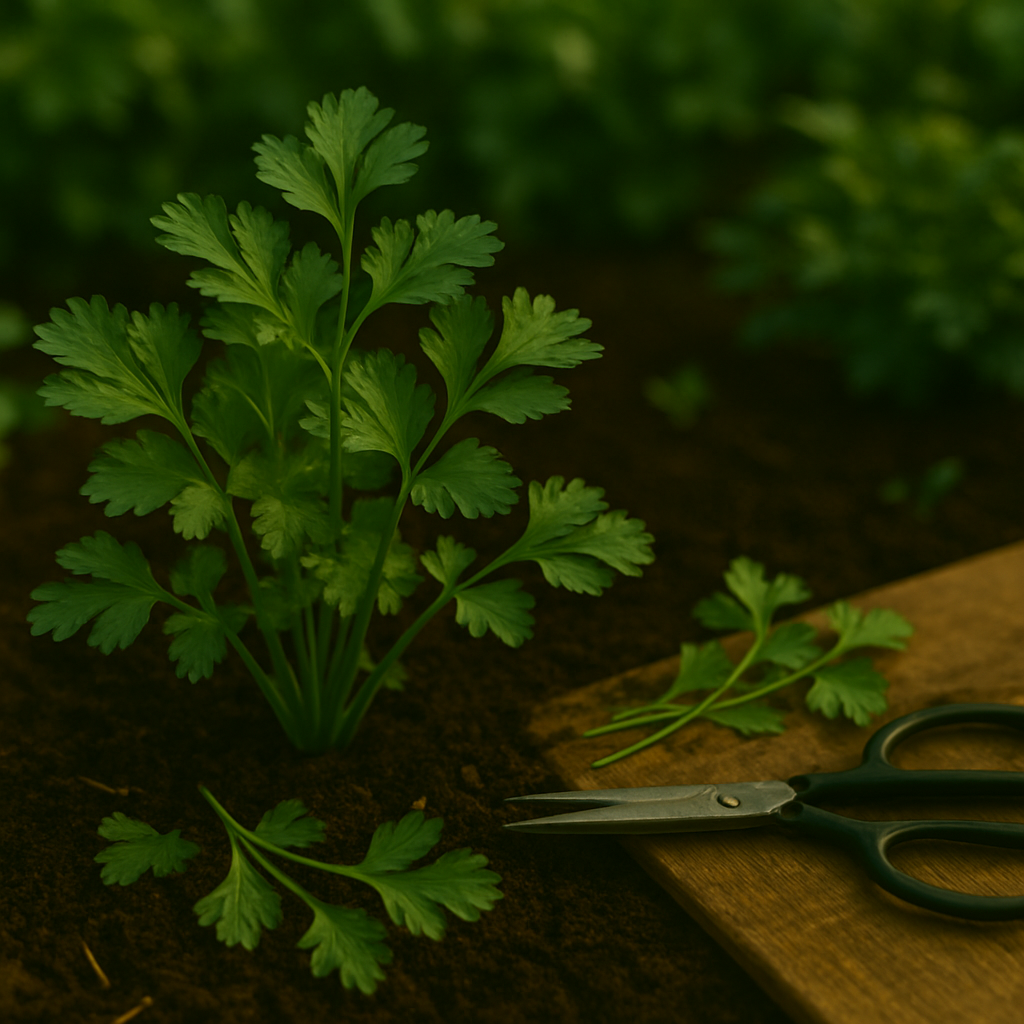Introduction
Pruning cilantro is a simple secret that can transform your small herb patch into a lush, flavorful bounty right in your kitchen. Cilantro, loved for its bright, citrusy fragrance and fresh flavor, is a staple in many home gardens and dishes worldwide. But if you’ve ever noticed your cilantro patch getting tall, leggy, or quickly going to seed, you’re not alone—gardeners everywhere want bushier growth for a reason.
With the right pruning methods, you can encourage your cilantro to produce more leafy greens, enhance its flavor, extend the plant’s life, and ensure a generous supply for guacamole, curries, and salsas all season long. In this article, you’ll find straightforward, step-by-step guidance and insider tips for pruning cilantro, helping you grow healthier, fuller plants that keep your kitchen—and recipes—bursting with fresh cilantro leaves.
Why Prune Cilantro?
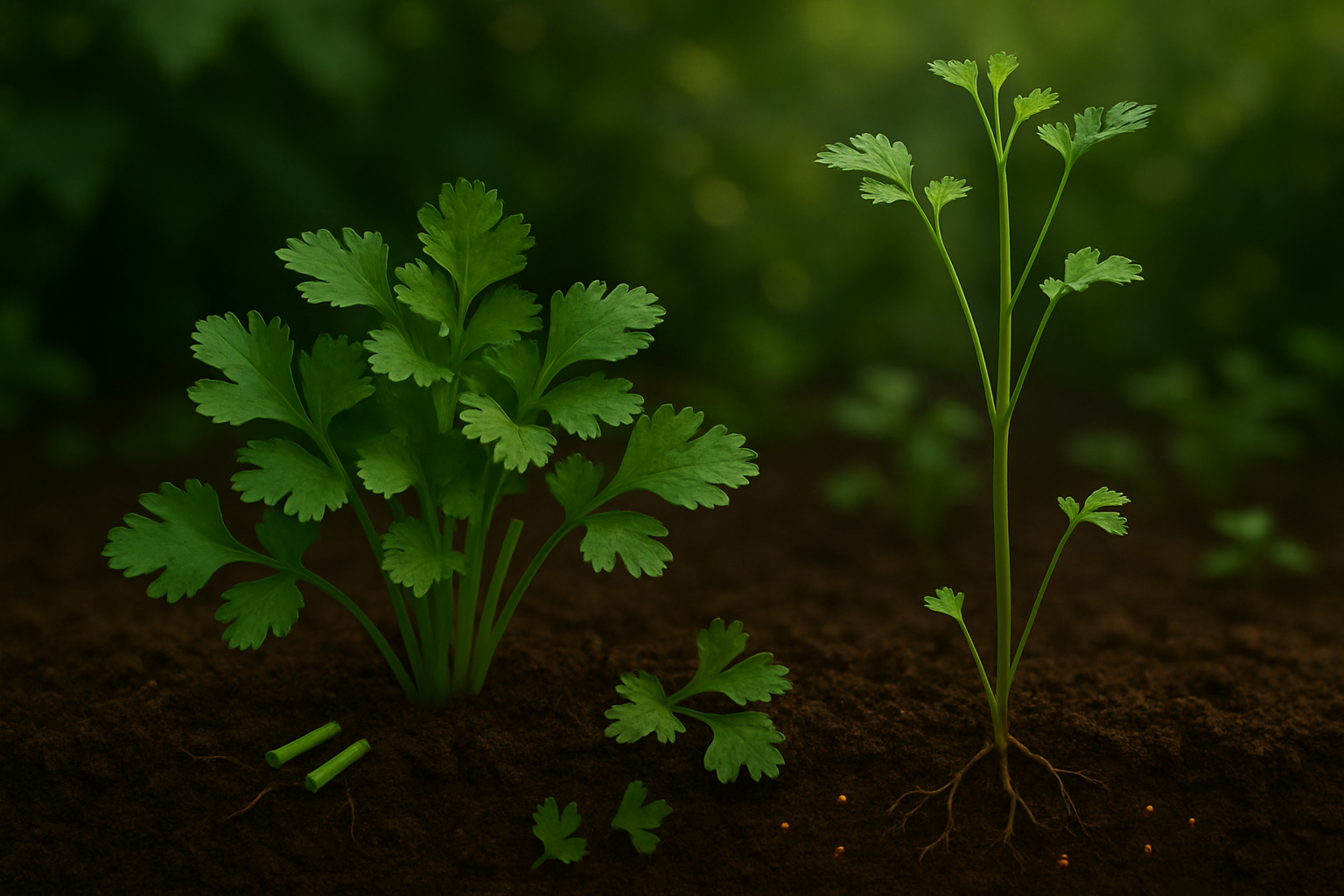
Pruning cilantro isn’t just about keeping your herb patch tidy—it’s the real secret to growing strong, healthy plants. When you regularly snip back the top leaves and stems, cilantro responds by sending out new side shoots, creating a bushier and more robust bunch.
This means you’ll get more flavorful leaves per plant, instead of letting all the energy go into one tall, spindly stem. Pruning also helps keep your cilantro from turning leggy—a common problem when leaves are crowded and stems stretch for light.
Leggy plants don’t just look awkward; they often produce fewer, weaker leaves and are more likely to bolt early. Bolting is when cilantro sends up a flower stalk and quickly goes to seed, which makes the leaves much more bitter and shortens the plant’s productive phase.
By routinely pinching or trimming back outer leaves and any developing flower buds, you keep your cilantro focused on growing lush, tasty greens.
Here’s an easy tip: use clean kitchen scissors to harvest a third of the plant’s height every week or two. This encourages steady growth and delays that bitter bolt. With just a little attention, your cilantro will stay flavorful and productive much longer.
When and How Often Should You Prune Cilantro?
The best time to start pruning cilantro is when the plant reaches about 4 to 6 inches tall and has developed several healthy leaves—usually just a few weeks after planting. At this early growth stage, gentle pruning encourages fuller, bushier plants and delays bolting, which is when cilantro prematurely flowers and becomes bitter.
Aim to prune cilantro every two to three weeks, or whenever you see new shoots ready to harvest. Look for feathery, bright-green leaves with stems that are at least three to four inches long. If the outer leaves look lush and robust, your cilantro is ready for a trim.
Always use sharp, clean scissors to snip the outermost stems about a third of the way down, being careful not to cut the central growth point—the plant’s “heart”—so it keeps growing strongly.
In hotter climates or during summer, increase pruning frequency to prevent bolting, since cilantro tends to go to seed faster in warm weather. If you live in a cooler region, you can prune a bit less often, as growth is slower and there’s less risk of premature flowering.
With regular, gentle pruning and some attention to climate conditions, you’ll keep your cilantro producing fresh, flavorful leaves for weeks longer, whether you’re growing indoors in pots or outside in your garden.
Step-by-Step Guide
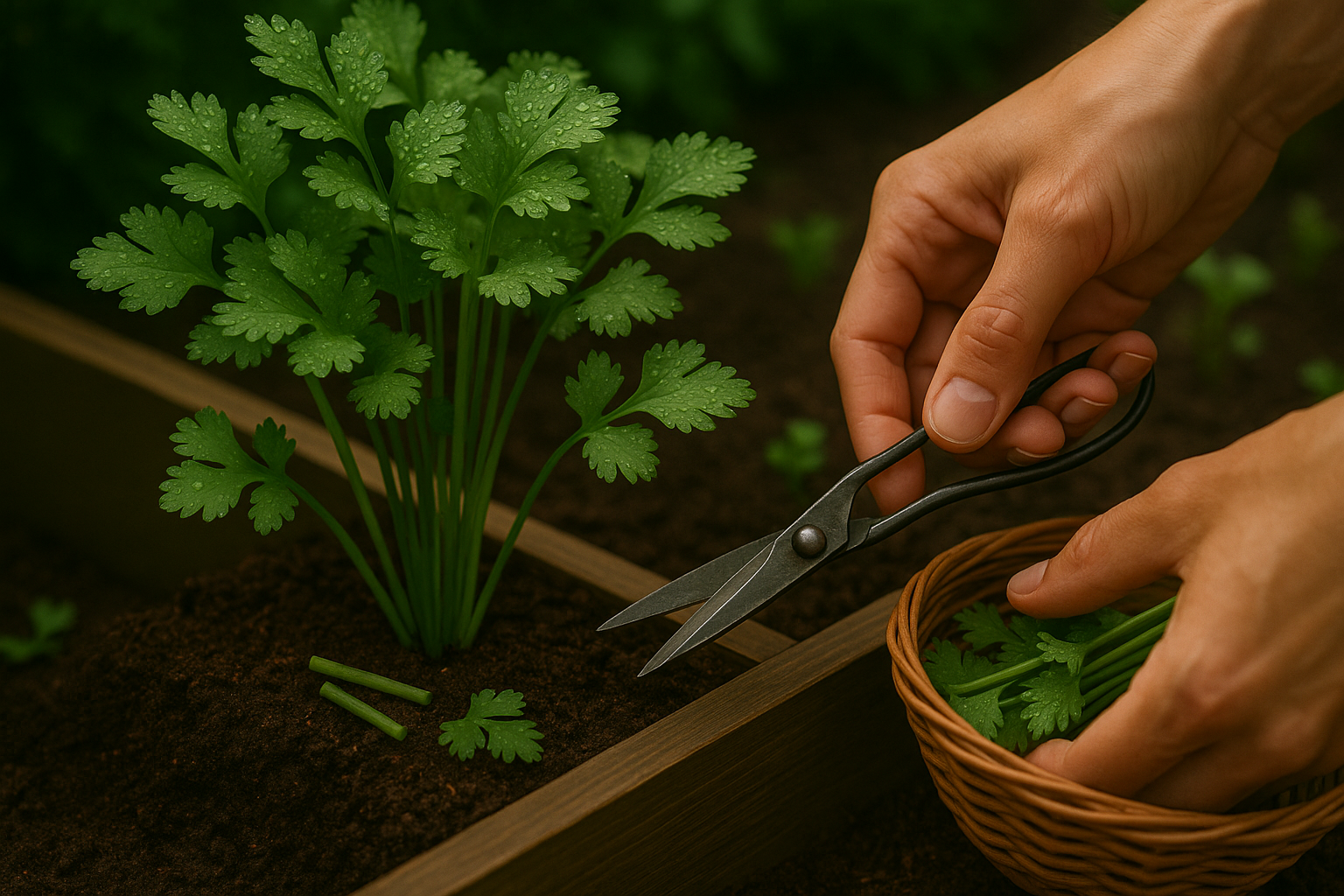
Pruning cilantro is simple, but a few tips will help your herb grow bushier and more productive. Start by gathering sharp, clean scissors or small pruning shears—dull blades can crush stems and invite disease.
Look over your cilantro plant: mature stems usually have delicate, feathery leaves near the tips and thicker, older stems near the base. As a rule, never remove more than one-third of the plant in a single pruning session—this ensures healthy regrowth.
Begin by snipping the outermost stems about one to two inches above the soil, cutting just above a set of leaves. This encourages new shoots to sprout below the cut, resulting in a fuller, bushier appearance. For example, if your plant looks tall and sparse—imagine a few lanky stalks with tufts of leaves at the top—pruning will prompt new growth at the base, soon turning it into a compact, leafy bundle.
Avoid removing the central stems too aggressively, as this can stunt the plant. Steer clear of cutting yellow or wilted leaves; instead, focus on harvesting healthy green ones. Resist the urge to let cilantro flower (bolt) by trimming away central stems with budding flower heads. Bolting diverts energy from leaf production, so regular pruning keeps your herbs flavorful and lush.
A common mistake is over-pruning—if you take too much, the plant might struggle to recover. Also, don’t trim just the tops, as this limits bushiness; always cut entire stem sections.
With these easy steps, your cilantro patch will thrive, providing endless fresh leaves for your recipes.
Preventing Bolting While Pruning
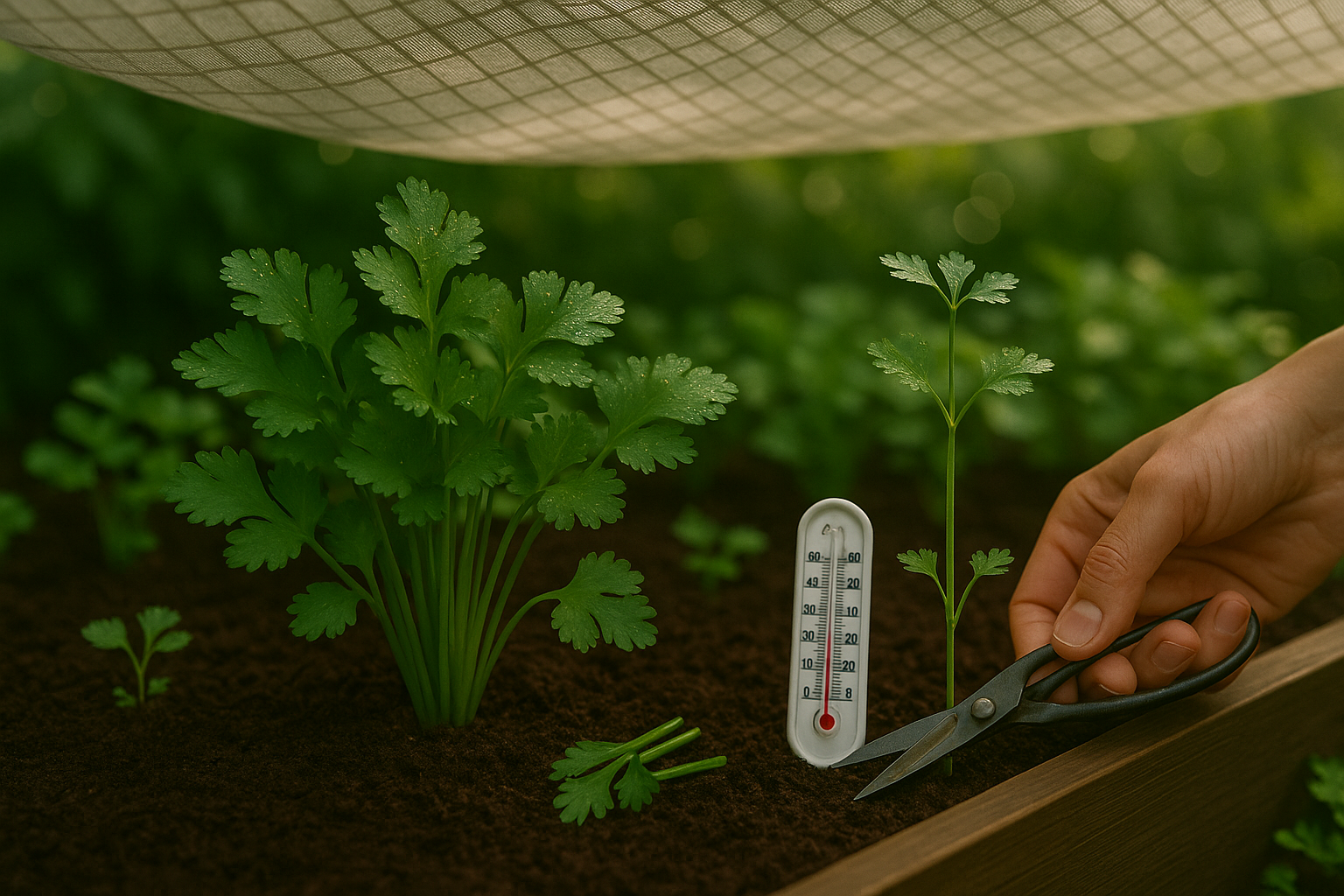
Bolting happens when cilantro plants suddenly shoot up a tall stalk and start flowering. This signals the end of their leafy growth and makes the flavorful leaves bitter. It’s a natural response to temperature changes or plant stress, but for gardeners wanting fresh, tasty cilantro, bolting is bad news.
The key to delaying bolting is careful pruning. Regularly snipping outer leaves and stems encourages the plant to focus its energy on growing more leaves instead of flowering. When you harvest, always take the outer leaves rather than cutting through the center; this helps keep the plant bushy and productive for longer.
Environment matters, too. Cilantro is especially prone to bolting in hot weather, so try planting in early spring or early fall when temperatures stay below 75°F (24°C). Shade the plants during the hottest part of the day or grow them in partial shade to keep them cool. Also, make sure the soil stays evenly moist without waterlogging.
Using these simple techniques—regular, careful pruning combined with attention to temperature and sunlight—you can keep your cilantro thriving and bolt-free, ensuring plenty of fresh herbs for your kitchen.
Harvesting Cilantro Leaves Without Damaging the Plant
Harvesting cilantro leaves without harming the plant is easy when you use the right technique. Instead of pulling or pinching random leaves, use clean scissors or garden shears to snip individual stems close to the base, focusing on those growing around the outer edge.
Always leave the central, inner stems untouched; these are the plant’s growth points and will continue producing new foliage. It’s important to understand the difference between harvesting and pruning:
- Harvesting removes the outer, mature stems to enjoy fresh cilantro in your cooking.
- Pruning targets weak, yellowing, or leggy stems to keep the plant healthy and encourage bushier growth.
Both methods have their place, but harvesting should avoid cutting more than one-third of the plant at a time to minimize stress.
For the best flavor, pick cilantro in the morning after the dew has dried but before the afternoon heat. This preserves its delicate oils, making the leaves taste fresher.
Begin harvesting once your cilantro is at least six inches tall, and continue every few days; frequent, light harvesting not only supplies a constant crop but also helps prevent bolting, which can make the leaves bitter.
Proper harvesting helps your plant thrive and ensures plenty of vibrant, tasty leaves for months.
Storing and Using Your Pruned Cilantro
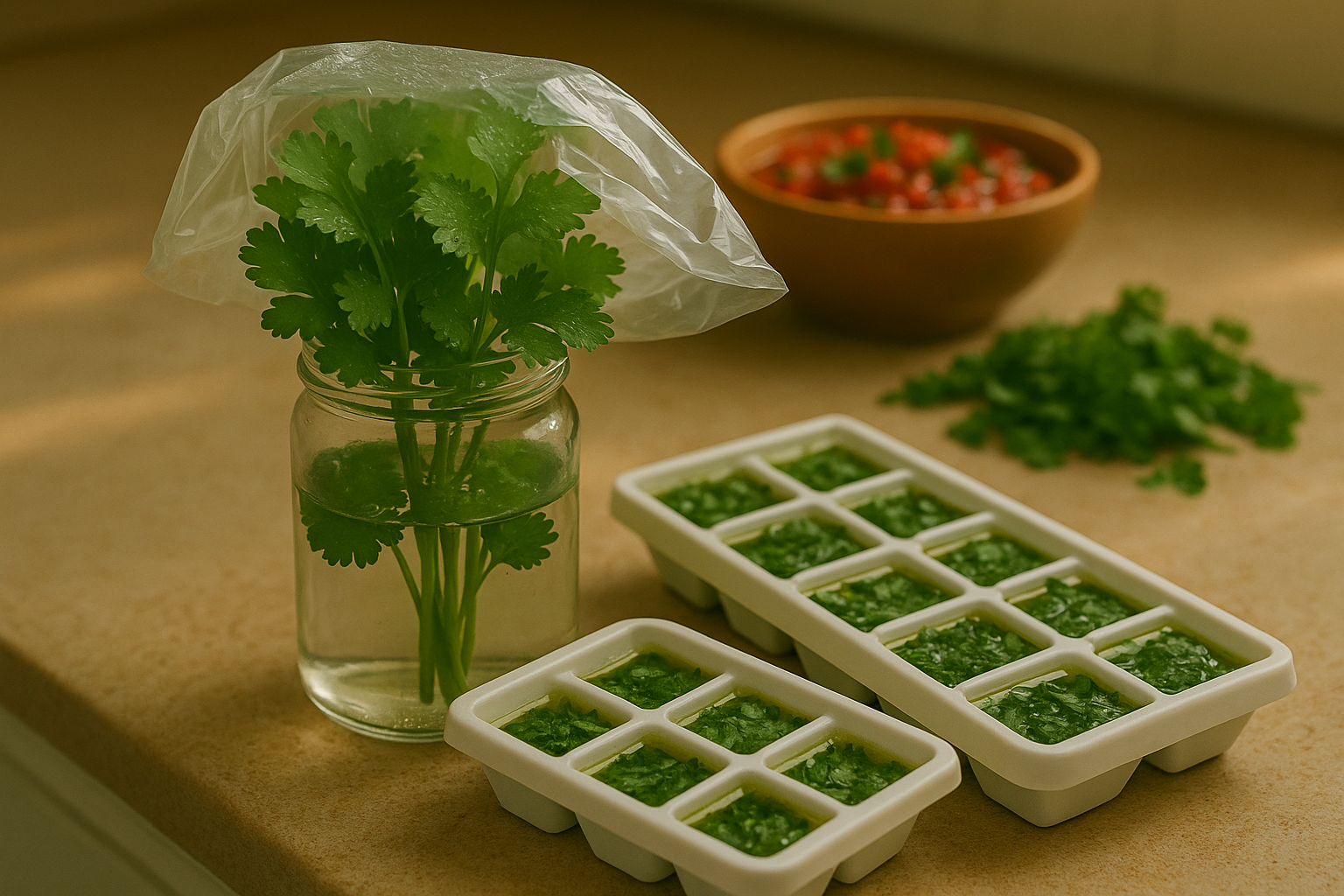
To keep your freshly pruned cilantro vibrant, start by storing it in the refrigerator. Trim the ends and place the stems in a glass of water, cover loosely with a plastic bag, and change the water every few days—this setup keeps cilantro fresh for over a week.
For longer storage, chop the leaves, spoon them into ice cube trays, cover with a little water or olive oil, and freeze. Toss these cubes straight into soups, stews, or rice dishes for quick flavor boosts.
When faced with an abundant harvest, put cilantro to good use in homemade salsas, chutneys, or chimichurri. You can also blend it into smoothies for a fresh kick or stir generous handfuls into salads, tacos, and curries.
If you want to save seeds for next season, let a few cilantro plants flower and go to seed. Once the seed heads turn brown, cut and dry them—these “coriander” seeds are not only useful as a spice but can be planted next year.
By using these preservation and culinary methods, you’ll ensure your cilantro never goes to waste and becomes a regular highlight in your kitchen.
Conclusion
Regular pruning is key to growing vibrant, bushy cilantro, giving you lush leaves for longer harvests and reducing the chances of bolting. Trimming back your cilantro not only encourages new growth but also helps prevent overcrowding and disease.
Even beginners can master this simple yet effective routine—just snip the outer stems regularly and avoid taking more than a third at once. Start pruning today for healthier plants and tastier harvests!
Have questions or success stories about growing cilantro? Share your experiences in the comments below—we’d love to help and hear your tips.
